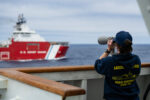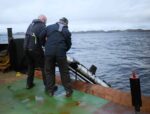France is preparing to modernize its maritime patrol aviation capabilities by ordering a new fleet of Airbus A321-based Maritime Patrol Aircraft (MPA) in 2026. The move will eventually replace the legacy Dassault Atlantique 2 (ATL2) aircraft and aims to enhance France’s long-range ISR (Intelligence, Surveillance, Reconnaissance), anti-submarine warfare (ASW), and maritime strike capabilities across its vast maritime zones.
Strategic Context: Replacing the Atlantique 2
The Dassault-Breguet Atlantique 2 (ATL2), introduced into French Navy service in the late 1980s, has been the backbone of France’s maritime patrol and ASW capability. Despite undergoing mid-life upgrades under the Standard 6 program—adding Thales Searchmaster radar, WESCAM MX-20 EO/IR turret, and improved mission systems—the ATL2 platform is approaching obsolescence due to airframe fatigue and limited growth potential.
According to French defense planning documents such as the Loi de Programmation Militaire (LPM) 2024–2030, the ATL2 fleet will begin retirement around 2030. The need for a modern platform with extended range, higher payload capacity, and modular open architecture has led France toward a solution based on the Airbus A321neo commercial airframe.
A321 MPA Concept: Leveraging Commercial Airframes for Military Missions
The A321 MPA concept leverages the proven Airbus A321neo platform—known for its fuel efficiency and long range—as a base for a next-generation maritime patrol aircraft. The aircraft will be militarized with mission-specific systems including:
- Advanced multi-mode radar systems (likely derived from Thales Searchmaster or similar AESA radars)
- EO/IR sensor turrets for day/night surveillance
- Magnetic Anomaly Detection (MAD) boom or alternative submarine detection sensors
- Sonobuoy dispensers integrated into fuselage or underwing pods
- Internal weapons bay or underwing hardpoints for torpedoes and anti-ship missiles
- C4ISR suite with tactical datalinks such as Link-16 and SATCOM connectivity
The use of a commercial airframe allows for reduced operating costs compared to legacy platforms while offering greater internal volume for crew stations and mission systems. Modular architecture also enables rapid reconfiguration between ASW missions, ISR patrols, or even strategic transport roles if needed.
Program Timeline and Procurement Plans
The French Ministry of Armed Forces has confirmed that an initial order will be placed in 2026 as part of its LPM roadmap. While exact quantities have not been disclosed publicly, earlier studies suggested a requirement of at least seven aircraft to match current ATL2 operational output.
The development is being led by Airbus Defence & Space in collaboration with Dassault Aviation—responsible for mission system integration—and Thales as primary sensor provider. The program builds on experience from Germany’s Pegasus SIGINT aircraft based on modified A319s and follows broader European trends toward militarizing commercial platforms.
The first prototype could fly by late 2027 if development remains on schedule. Initial operational capability (IOC) is expected around 2030–2031—timed with ATL2 drawdown. France may also explore export opportunities or joint procurement options with other NATO allies seeking cost-effective MPA solutions.
Operational Advantages Over Legacy Platforms
The A321 MPA offers several key advantages over the ATL2:
- Extended Range: With ferry ranges exceeding 7,400 km depending on configuration, it can cover larger maritime zones without aerial refueling.
- Crew Comfort & Endurance: Pressurized cabin with modern avionics reduces fatigue during long-duration missions.
- Sensors & Processing Power: Next-gen AESA radar and AI-assisted sensor fusion enhance target detection across sea-surface/subsurface domains.
- Weapon Flexibility: Capable of deploying MU90 torpedoes or future stand-off anti-ship missiles like AM39 Exocet variants or FC/ASW concepts.
- Sustainability: Commonality with civil aviation supply chains reduces lifecycle costs and improves parts availability.
This transition aligns France’s naval aviation strategy with emerging threats such as increasingly quiet submarines from Russia or China operating in Atlantic approaches or Indo-Pacific areas where France maintains overseas territories like New Caledonia and Réunion Island.
Tactical Implications Across NATO and EU Defense Posture
The shift toward an advanced MPA capability also strengthens NATO’s collective ASW posture. With P-8 Poseidons operated by the U.S., UK, Norway, Germany (on order), and Italy considering similar acquisitions—the introduction of an interoperable European alternative adds depth to alliance operations while reducing overreliance on U.S.-centric platforms.
If successful, the French A321 MPA could serve as a model for other EU nations seeking P-8 alternatives due to budget constraints or industrial policy considerations. It may also facilitate joint training exercises under frameworks like JEF-MARITIME or EU PESCO projects focused on maritime security interoperability.
A Growing Trend Toward Militarized Commercial Platforms
This program reflects a broader trend in military aviation where commercial airframes are adapted into specialized ISR/SIGINT/MPA roles due to cost-effectiveness and rapid scalability. Examples include:
- Luftwaffe Pegasus SIGINT aircraft based on modified A319CJ platform
- NATO AGS RQ-4D Global Hawk derivative using off-the-shelf components
- Boeing’s P-8 Poseidon derived from B737NG airframe
This approach allows nations like France to maintain strategic autonomy while leveraging domestic aerospace industries such as Airbus Group SE—a key pillar of European defense sovereignty initiatives post-Brexit amid growing global tensions over sea lanes security.
Conclusion: Strategic Leap Forward for French Naval Aviation
The planned acquisition of Airbus A321-based MPAs marks a significant modernization step for French naval air forces. By combining extended reach with cutting-edge sensors onboard a cost-efficient platform backed by national industry champions like Airbus and Dassault Aviation—France positions itself at the forefront of next-generation maritime surveillance operations within Europe and beyond.
If timelines hold through development milestones beginning in 2026–2027—with IOC near end-of-decade—the new fleet could offer enhanced deterrence against submarine threats while supporting power projection across both Atlantic corridors and Indo-Pacific theaters where France maintains strategic interests.










